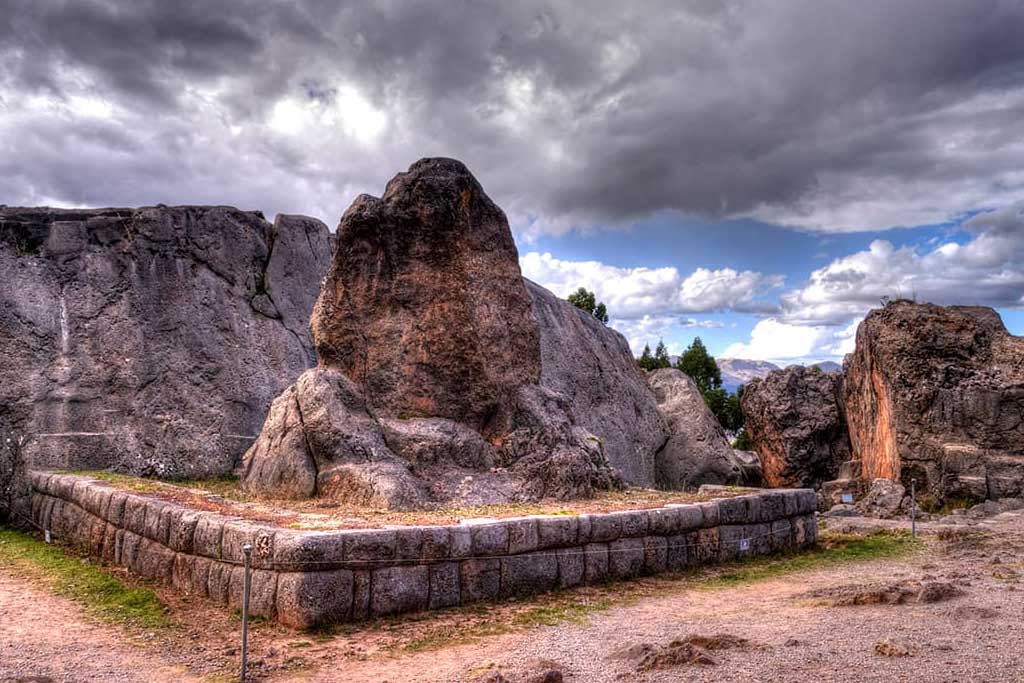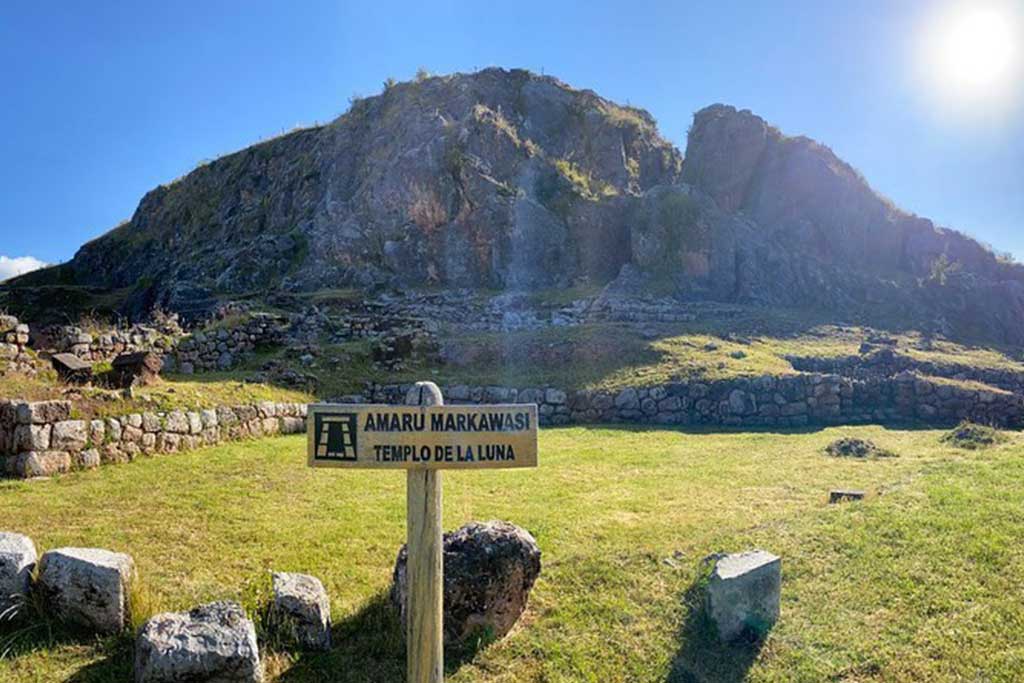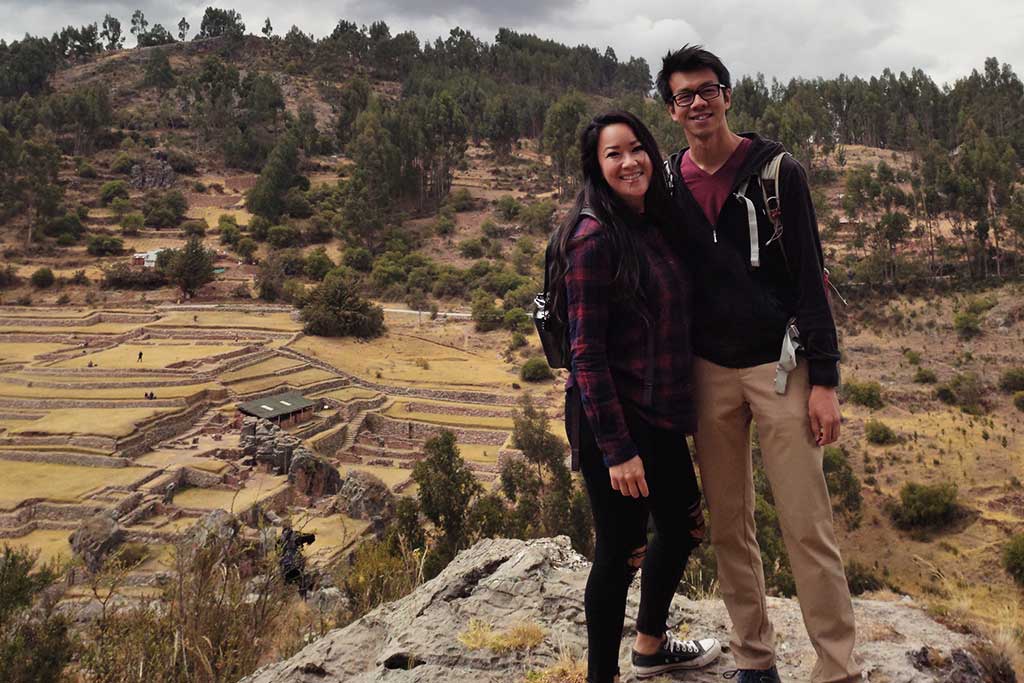Travelers from all walks of life are sucked in by the magic of the Peruvian Andes. Former capital of the powerful Inca Empire, Cusco is a city rich in history. In fact, the Maximo Nivel institute sits directly across from Qorikancha, which was once the Temple of the Sun.
Even if you have only an afternoon to explore the city, it doesn’t take long to notice the complex overlay of Spanish colonial architecture and monolithic Inca stonework—each street a legacy to one of the world’s most advanced ancient civilizations.
Cusco is a bucket list destination for many. The majority of tourists passing through are on their way to see one of the seven wonders of the world: Machu Picchu. And whether you take the train or trek there, the mountainous backdrop of Machu Picchu is breathtaking.
However, it’s a myth that you must tour Machu Picchu to catch a glimpse of this mysterious civilization. There are dozens of archeological sites and museums to explore around Cusco and the Sacred Valley that are included on the “Cusco Tourist Ticket.”
But there are also other ruins that don’t even require an entrance fee! Whether you’re on vacation in Cusco or teaching there for a year, there are several free archaeological sites within walking distance of the city. And I’ve yet to see any ruins that weren’t worth the hike!

Q’enqo Chico
Finding your bearings can be daunting when you first set foot in Cusco. Don’t be too disconcerted, however, if you encounter multiple names for what is seemingly the same site. The names of ruins are usually written in Quechua—a language still used by the region’s indigenous communities.
Because Quechua is more often spoken than written, you’ll probably see various spellings of the same words. Sometimes, historical areas will also be given translated names or referred to in a combination of Spanish and Quechua.
Most of the archaeological complexes that you can hike to from Cusco aren’t far from Saqsaywaman, a well-known Inca structure perched above the city. It is included on the tourist ticket as is nearby Q’enqo.

But to enter closeby “Q’enqo Chico,” you don’t have to pay an entrance fee. This site is easily accessible via the Cristo Blanco bus line, which regularly runs up to the statue of Christ overlooking the city.
If you get off at the Q’enqo stop, you can walk back along the same road to reach Q’enqo Chico. This site offers a fascinating mixture of Inca and pre-Inca stonework, as well as a panoramic view of the city. The perfect place for a picnic!
Templo de la Luna
Another nearby archeological site with free entry is Templo de la Luna, sometimes referred to as Amaru Markawasi. The Moon Temple is a 20 to 30 minute walk from Q’enqo Chico and you can reach it from the same bus stop.
When you get off the bus to walk to Templo de la Luna, take the path that veers left off the main road. If you’re lucky, there may be a woman at the fork in the road selling chicha morada, a traditional drink made from corn.
Along the way, you’ll pass a tienda (shop) and a waka—stone carvings that mark an area once used for worship. Follow this path until you reach a gate that opens into a large field. Typically, local guides will be waiting there with their horses.
You can easily walk to these ruins by yourself, but horseback rides are a popular alternative if you would prefer to take a guided tour of the greater area. Despite only being a short bus ride away, you’ll already feel far outside city limits.

Templo de la Luna is a serene place to spend an afternoon. There is a small stream in the area and local sheep herders often wander through. You can climb up the ruins, which are segmented by a cave said to be used as part of ancient birthing ceremonies.
As with most Andean archeological sites, you’ll be able to see a combination of Inca and much older pre-Inca architecture. Many smaller religious sites and stone carvings (or wakas) surround Templo de la Luna.
Exploring these areas on your own is a unique opportunity to connect with the mystery of Inca ruins in a less crowded setting. Also be sure to keep an eye out for hummingbirds zipping past or condors gliding overhead.
Inkilltambo
If you’d like to continue to a more remote site still within reach of the city, Inkilltambo is about an hour’s hike along a marked mountain path. You’ll descend down a small hill through the forest before entering this larger archeological complex, which you can see from the trail above.
A wooden bridge spans a small creek at the entrance. Though these ruins are more formally maintained and marked with informational signs, there is still no entry fee. This complex will give you a deeper sense of the Inca’s day-to-day lives.
From intricate stairways to advanced agricultural terraces and a designated drying area for crops, Inkilltambo is a diverse archeological complex. There are multiple levels to climb through and various viewpoints to explore. And the few free sites I’ve mentioned are only the tip of the iceberg!

Whether you are looking for a full-day hike or hoping to stick closer to Cusco’s city center, there is no shortage of archaeological sites. Travelers are drawn from all over the world to experience the mystic wonder of all the Inca and their predecessors have left behind.
And ultimately, it doesn’t matter if you set out on your own or are more comfortable hiring a guide, but I encourage you to branch out beyond the tourist ticket if you have time. Over every slope and around every corner it seems you’ll find a new mystery to explore.
